Author: Roger Eardley-Pryor
Cheryl Resh: A Life in Student Services and a Federal Direct Loan Program Advocate, oral history release
New oral history: Cheryl Resh
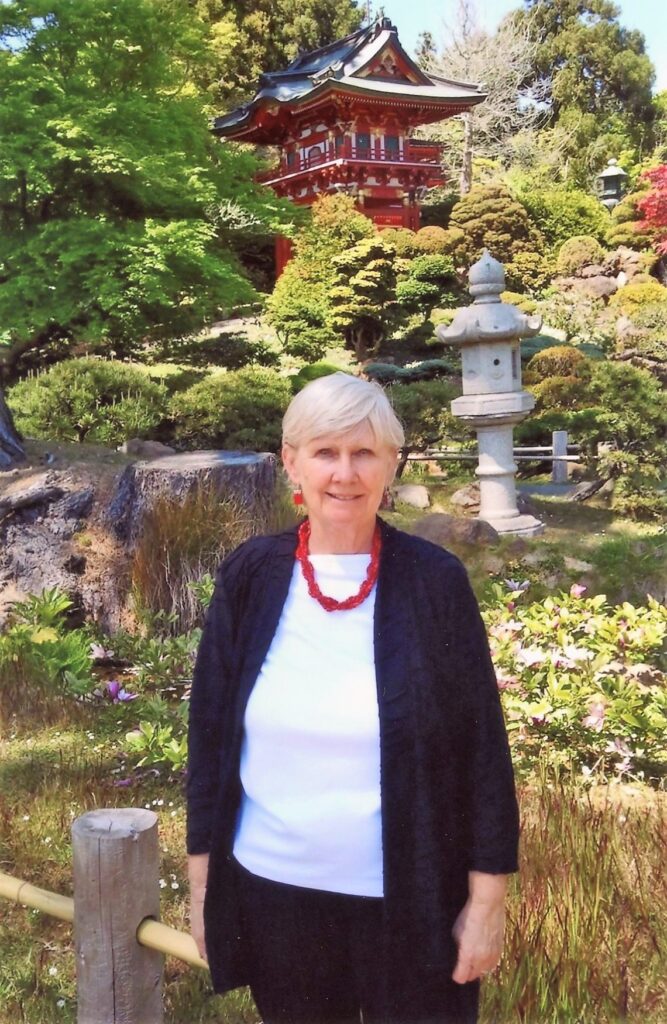
Cheryl Resh’s oral history paints an intimate portrait of family, of love, of world travel, and of her nearly four-decade career in university administration—from Resh’s first job in the early 1970s as a computer programmer at a community college in northern Illinois, to her eventually becoming Assistant Vice Chancellor and Director of the Financial Aid and Scholarships Office at UC Berkeley where she implemented new computerized financial-aid delivery systems and expanded student aid availability for low income and first-generation students. Resh also served on the Executive Council of the National Direct Student Loan Coalition from 2003 through 2011 to advocate in Washington DC for increased student aid and national expansion of the Direct Loan Program. The nation-wide transition to Direct Loans was enacted during the Obama administration in 2010, adding billions of dollars to the federal Pell Grant Program while also eliminating excessive fees for students and their families. Upon her retirement, Resh earned the Berkeley Citation, a high honor reserved for those whose contributions to UC Berkeley go beyond the call of duty and whose achievements exceed the standards of excellence in their fields.
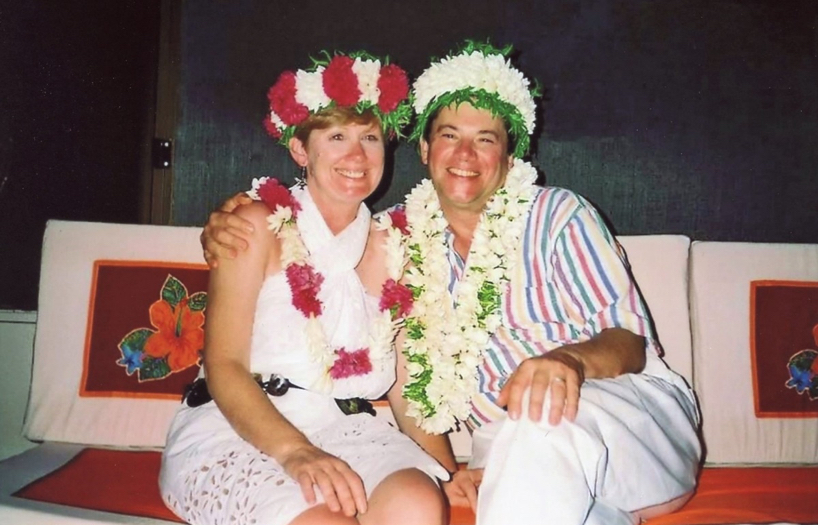
Cheryl Resh and I recorded her oral history over Zoom from January to late March 2021. Our eighteen hours of recordings produced Resh’s reflective transcript of nearly 470 pages, including an appendix of photographs with family and friends and some of her world-spanning travels. In addition to discussing details from her outstanding service to the UC Berkeley community, Resh shared tales of her parents’ lives, her own memories of childhood, her experiences of becoming a mother in 1970 and eventually a grandmother, as well as sharing the tragedy of her son’s sudden death in 2020 just a few months before recording her oral history. Resh also discussed her deep involvement in competitive horse jumping, her ownership of two horses, and her tangential connections to horse-trading activities she later learned were linked to Chicagoland organized crime. And of course, Resh shared her deep love and many adventures with her husband, Vincent H. Resh, a Professor of Aquatic Ecology and Entomology at UC Berkeley with whom she has visited every continent on Earth, including several decades of visiting the island of Moorea in French Polynesia as well as their travels on rivers and railroads across Eurasia and Africa.
Cheryl Resh’s oral history also offers unprecedented detail on the operations, computerization, and evolution from 1978 through 2011 of UC Berkeley’s student services. Her career spanned Berkeley’s transition from hand-written student records that were then transferred to key-punched cards and inserted into a mainframe Tandem computer in the late 1970s, to the development and implementation of bespoke computerized financial aid delivery systems and web-based student services systems that allowed real-time access and updating to individual student information. By the time she retired as Vice Chancellor and Director of the Financial Aid and Scholarships Office at UC Berkeley, Resh managed seventy staff members in eleven units that were responsible for the programming, processing, and delivery of $250,000,000 of student financial aid that came from 700 federal, state, institutional, and other scholarship funds that were delivered in aid packages uniquely individualized for over 25,000 undergraduate and graduate students.
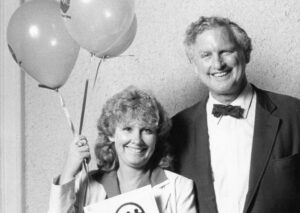
Receiving the Berkeley Citation in 2011 surprised Resh, but not her friends and colleagues, many of whom wrote letters celebrating her contributions to UC Berkeley and to students across the nation. Harry Le Grande, a Vice Chancellor at UC Berkeley’s Division of Student Affairs, reported that “Dr. Cheryl Haigh Resh has dramatically improved student aid service in an environment of rapidly escalating costs and shrinking operational resources to provide services.” Kate Jeffery, the Director of Student Financial Support in the University of California Office of the President, praised Resh for her “rare combination of technical ‘systems’ expertise together with a keen grasp of the policy and student equity implications of each feature and choice.” Jeffery noted how “Cheryl has always been particularly compassionate on a personal level with students for whom the challenge of coming to UC Berkeley was possibly the hardest.” And Roberta Johnson, the Director of Financial Aid at Iowa State University and a fellow past chair of the National Direct Student Loan Coalition, shared how Resh’s leadership on their national executive committee guided “a movement that has changed financial aid for students for the better and hopefully forever!”
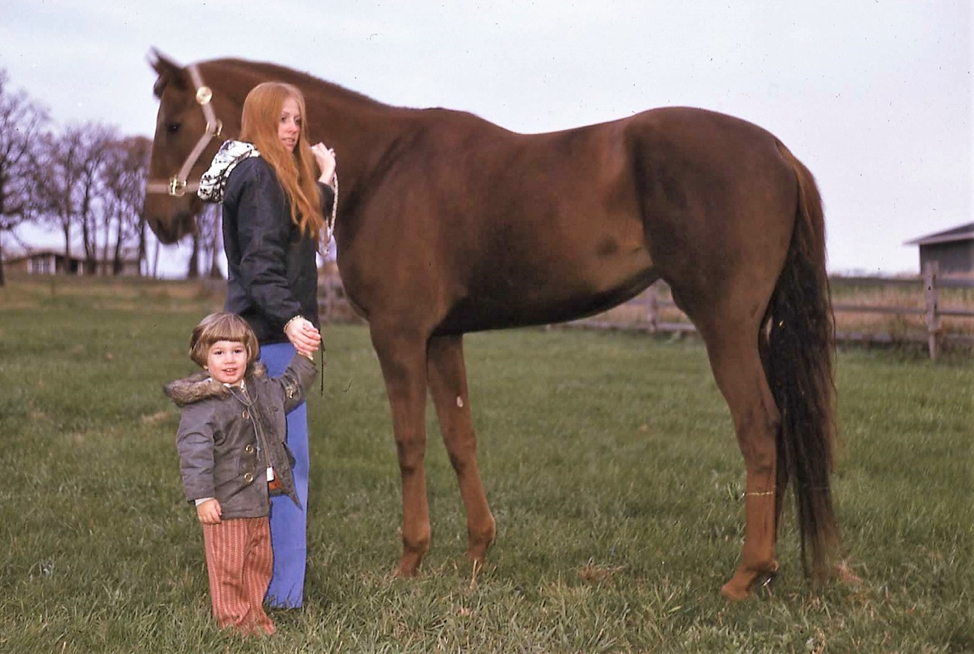
Throughout her oral history, Cheryl Resh wove together stories about her family, her personal life, and her professional life. Resh was born in September 1947, in Dubuque, Iowa, as the eldest of six siblings to their father, a Lutheran minister who spent his entire life not knowing that he was actually adopted from an orphanage by his own birth mother. In the late 1960s, Resh attended Northern Illinois University, got married, and followed her recently drafted husband to the Panama Canal Zone, where she spent a transformative year amid Panama’s military coups. In 1970, Resh’s son Jeffrey Haigh was born, and that same year, she earned her B.S. in Mathematics from Northern Illinois University. In 1972, Resh began her career in university administration as a computer programmer and soon became Assistant Director of Admissions and Records at Rock Valley College in Rockford, Illinois. In 1978, upon earning her M.S. in Higher Education Administration from the School of Business Management at Northern Illinois University, Resh bravely moved with her son from the Midwest to California as a single mother to begin work as an administrative analyst in the Office of Admissions and Records at UC Berkeley. She soon became Associate Director of Records, helped convert Berkeley from quarters to semesters, and at one point was even burned in effigy on the steps of Sproul Hall during a staff union protest over her efforts to automate the Records Office. By 1985, she and her colleagues successfully ended the era of hand-written student records by automating all major processes in Berkeley’s Admissions and Records Office. In 1986, Resh began work in Berkeley’s Financial Aid and Scholarships Office where she worked for the next twenty-five years.
From her Financial Aid office in Sproul Hall, Resh had a front-row seat on historic UC Berkeley activities, from student demonstrations against South African apartheid in the mid-1980s, to the campus controversy in the 1990s over declining Asian American admissions that re-shuffled campus policies as well as the careers of several leaders in university administration. In 1991, Resh earned her Ph.D. in Educational Administration from UC Berkeley, with emphasis in Finance, Economics, and Operations Research. At the Financial Aid Office, she helped implement computer system upgrades to the SAMS (Student Aid Management System) software from Sigma Systems, and from 2007-2010, she managed the new ProSAM computer system implementation to greatly enhance Berkeley’s financial aid delivery system and its web-based student service systems.

Resh remains rightfully proud of her many years working to implement Federal Direct Loans for students, first at UC Berkeley, and then for all students across the nation. She implemented the Direct Loan program at UC Berkeley in 1995, which greatly improved the delivery of over $100 million per year in financial aid along with long-term savings on the total cost of their loans, all while enabling enormous administrative savings for the campus. Resh also shared stories of serving from 2003 through 2011 on the Executive Council of the National Direct Student Loan Coalition. Through the National Direct Student Loan Coalition, Resh and her fellow Financial Aid Directors from universities across the nation successfully lobbied US Congressmembers to protect and expand the Direct Loan Program. The Health Care and Education Reconciliation Act of 2010 then mandated that all federal student loans be Direct Loans, which also increased student grant aid for needy American students by over $60 billion while saving significant taxpayer dollars over time.
Over Cheryl Resh’s thirty-three year career at UC Berkeley, she substantially enhanced student aid services while reducing costs, and she did this work while maintaining Berkeley’s commitment to supporting students from all economic backgrounds, especially students from the lowest income groups. Her dedication to equity of opportunity included her development of the Berkeley Cares program, which provided needed financial aid outreach and support to newly admitted low-income students, many of whom were first generation college students.
Cheryl Resh defied norms to achieve success both with and for others, all while carving a unique and adventurous path through life. I hope you enjoy reading Cheryl Resh’s oral history as much as I enjoyed working on it with her.
About the Oral History Center
The Oral History Center of The Bancroft Library preserves voices of people from all walks of life, with varying political perspectives, national origins, and ethnic backgrounds. We are committed to open access and our oral histories and interpretive materials are available online at no cost to scholars and the public. You can find our oral histories from the search feature on our home page. Search by name, keyword, and several other criteria. Sign up for our monthly newsletter featuring think pieces, new releases, podcasts, Q&As, and everything oral history. Access the most recent articles from our home page or go straight to our blog home.
Hon. Kevin Murray: California State Assembly (1994-1998) and California State Senate (1998-2006), oral history release
New oral history: Hon. Kevin Murray
Video clip from Kevin Murray’s oral history about his political role models and becoming more a legislator than a politician:
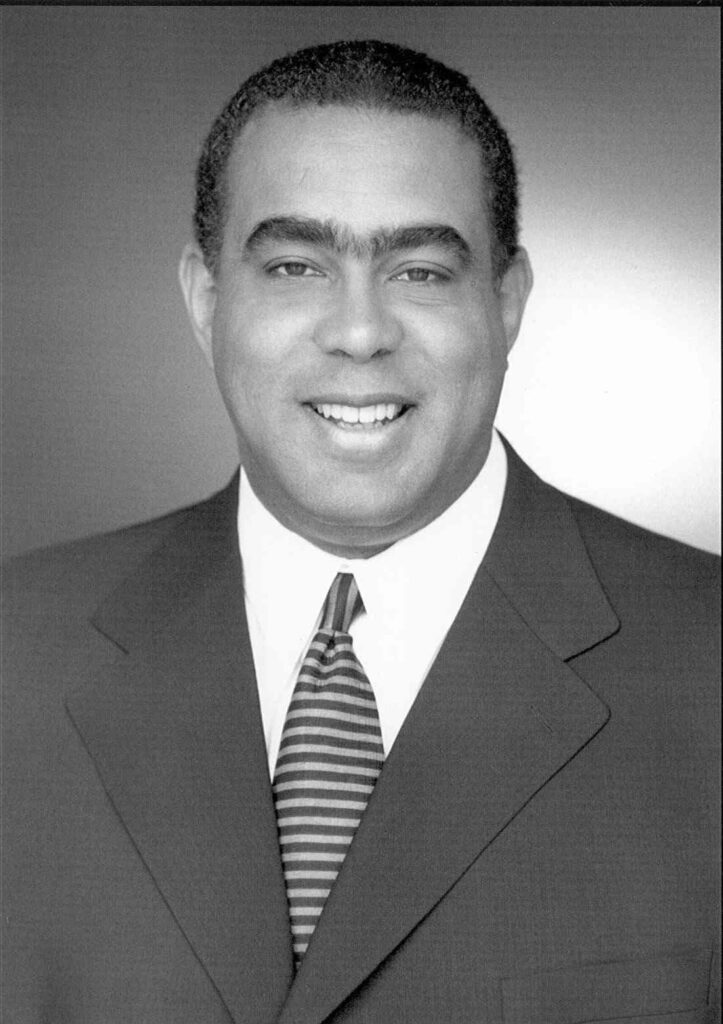
Kevin Murray represented regions of Los Angeles as a member of the Democratic party in the California State Assembly (1994-1998) and in the California State Senate (1998-2006), until he retired due to term limits. Murray and I recorded over five hours of interviews about his life and career in May 2021 as part of the Oral History Center‘s contributions to the California State Government Oral History Program. Murray’s oral history reveals ways he capitalized on opportunities as they arose throughout his life. In the process, he became an influential leader in the California Legislature, including as chair of the state’s Democratic Caucus and the California Legislative Black Caucus.
Many of Kevin Murray’s life stories reflect a kind of American dream narrative for Black middle-class families in Los Angeles. Murray was born in the spring of 1960 in the westside community of View Park, where he still lives and now raises his own family. Both of Murray’s parents graduated from college, and around the time of his birth, Murray’s father transitioned from work as an aerospace engineer to working in Los Angeles city politics and eventually in state politics. Around that time, their View Park neighborhood experienced white flight, which according to Murray resulted with an influx of middle and upper-middle class Black families of doctors, lawyers, dentists, and political figures who became his role models. At his parents’ insistence, Murray attended elite Los Angeles middle and high schools. During college, while earning a Bachelor of Science in Business Administration from California State University, Northridge, Murray began booking music and entertainment acts on campus. After graduating in 1981, Murray’s college entertainment experiences led to him start work in the infamous mail room at the William Morris Agency in Beverly Hills. While working at William Morris, Murray earned a Master’s in Business Administration from Loyola Marymount University in 1983, and in 1987, he earned a Juris Doctor from Loyola Law School. Prior to his political career, Murray provided consulting and management services to artists in the entertainment industry while also practicing law in the areas of entertainment, real estate, insurance, and dependency.
Due to his father’s work in L.A. politics, Murray recalled as a child attending barbecues and breakfasts at the homes of legends in California politics like Big Daddy Jesse Unruh and Black political leaders like Mervyn Dymally, Julian Dixon, and Tom Bradley. From his young exposure to powerful politicians, Murray learned they were simply people, not intimidating icons. Eventually, Murray came to believe, rightfully, that he, too, could become a political leader. When an opportunity to run for the California Assembly arose in the early 1990s, Murray seized that chance and won his first election to the California Assembly in 1994. His father was, by then, also serving in the Assembly, which made them the first-ever California Assemblymembers to serve as father and son.
Video clip from Kevin Murray’s oral history about California’s North-South power politics:
Murray described himself as more of a legislator than a politician. In the Assembly, Murray worked with Speaker Willie Brown and quickly became a leader who, over the next twelve years, served in both the California Assembly and Senate. Murray was elected as a Democratic member of the California State Assembly from the 47th District in Los Angeles from 1994-1998, where served as Chair of the Transportation Committee. In the California State Senate from 1998 to 2006, Murray represented the 26th District based in Culver City, California, and served as chair of the influential Appropriations Committee, the Transportation Committee, the Democratic Caucus, and the California Legislative Black Caucus. Murray also served on the California Film Commission.
Most of Murray’s oral history explored his years of political work in Sacramento where he passed numerous bills, including one of the nation’s first laws on identity theft (AB 157, the Consumer Protection: Identity Theft Act); bills on “Driving while Black”; education bills to address the digital divide and ensure California students had access to the internet (then called “the information superhighway”); bills protecting victims of domestic violence; a bill protecting houses of worship from hate crimes; and many others, including a bill eventually vetoed by Governor Pete Wilson that would have enabled Californians to register to vote online, to sign a petition online, and to vote via the internet as early as 1997.
While Murray’s oral history details his legislative efforts, he also reflected broadly on a variety of topics, including key differences between the California Assembly and Senate; on influential committee assignments; on intra-caucus relationships between the Black Caucus, Latino Caucus, API Caucus, and the Women’s Caucus; on North-South power politics in California; on his distaste for term limits and the importance of legislative staff; and on his political role models. Murray concluded his oral history with brief a discussion of his post-legislative life in Los Angeles with his wife and their two children, including reflections on the 2008 election of Barack Obama and the Black Lives Matter marches of 2020.
Video clip from Kevin Murray’s oral history about intra-caucus relationships in the California Legislature:
About the California State Government Oral History Program
Kevin Murray’s oral history was conducted in collaboration with of the California State Government Oral History Program, which was created in 1985 with the passage of AB 2105. Charged with preserving the state’s executive and legislative history, this state Program conducts oral history interviews with individuals who played significant roles in California state government, including members of the legislature and constitutional officers, agency and department heads, and others involved in shaping public policy. The State Archives oversees and directs the Program’s operation, with interviewees selected by an advisory council and the interviews conducted by university-based oral history programs. Over the decades, this collective effort has resulted in hundreds of oral history interviews that document the history of the state’s executive and legislative branches, and enhance our understanding of public policy in California. The recordings and finished transcripts of these interviews are housed at the State Archives. Additionally, Kevin Murray’s oral history is available online in the Berkeley Library Digital Collections.
About the Oral History Center
The Oral History Center of The Bancroft Library preserves voices of people from all walks of life, with varying political perspectives, national origins, and ethnic backgrounds. We are committed to open access and our oral histories and interpretive materials are available online at no cost to scholars and the public. You can find our oral histories from the search feature on our home page. Search by name, keyword, and several other criteria. Sign up for our monthly newsletter featuring think pieces, new releases, podcasts, Q&As, and everything oral history. Access the most recent articles from our home page or go straight to our blog home.
Video clip from Kevin Murray’s oral history about California Senate and Assembly differences and good committees:
Video clip from Kevin Murray’s oral history about term limits for California legislators and the role of legislative staff:
Samuel Barondes: Integrating Molecular Neuroscience with Psychiatry
New oral history release: Samuel Barondes
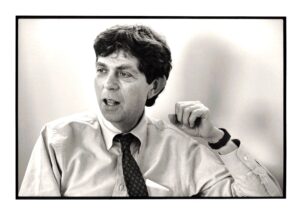
Samuel Barondes is a psychiatrist and neuroscientist at the University of California San Francisco (UCSF) who, over the course of his exceptional career, helped bridge those two fields as a researcher, author, and builder of interdisciplinary programs. Sam and I video-recorded over eighteen-hours of his life narrative at his home in Sausalito in 2019, which resulted in a rich 390-page transcript including an appendix with photographs of his family, dear friends, and fellow researchers. Parts of Sam’s oral history explore meta-themes in his life, from his memories about researching the molecular biology of memory-formation in our brains, to the human connections and collaborations Sam nurtured while investigating the ways neural synapses make new connections. Throughout, Sam’s oral history reflects his abiding fascination with what makes people tick—at the molecular level in cells and synapses, and metaphorically in people’s hearts and souls.
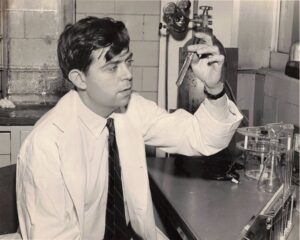
In many ways, Sam Barondes’s life reflects a kind of American utopia. Sam was born during the Great Depression in New York City. As the only child to Jewish immigrants who received little formal schooling, Sam was the first in his family to attend college. In the 1950s, he earned an Ivy League education and became a medical doctor before launching his career as a research scientist at some of the world’s most acclaimed institutions. Sam trained in clinical medicine and psychiatry at several Harvard teaching hospitals before becoming a postdoctoral trainee in the early 1960s at the National Institutes of Health. There, Sam was introduced to the new science of molecular biology by University of California alumnus Gordon Tomkins, and Sam participated in Marshall Nirenberg’s Nobel Prize-winning studies that deciphered the genetic code. In his subsequent career, Sam used this biomolecular perspective to make novel discoveries of his own, to enrich our understanding of how human brains work, and to build new institutions to uplift the work of others.
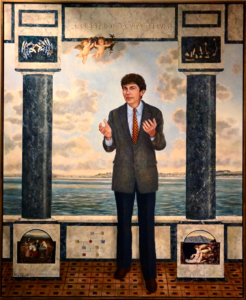
Along his life journey, Sam found love, experienced tragedy, and found love again, all while fostering deep, life-long friendships with other exceptional researchers, including Sydney Brenner, Francis Crick, Eric Kandel, and other luminaries whom Sam discusses in his oral history. In 1970, Sam moved west with his own family to live along the California coast, first in La Jolla where he raised two daughters, and now in Sausalito, where his stunning home overlooks the San Francisco Bay from an ocean-front property once owned by William Randolph Hearst. Sam spent most of his career at the University of California, first at its San Diego campus (UCSD 1970-86) as a founding Professor of Psychiatry and in the interdepartmental Neuroscience Program. He then moved to its San Francisco campus (UCSF 1986-) where he was Chair of Psychiatry and Director of the Langley Porter Psychiatric Institute before founding the Center for Neurobiology and Psychiatry as the Jeanne and Sanford Robertson Endowed Chair. Sam also held many editorial and advisory positions including co-founding and serving for ten years as President of the McKnight Endowment Fund for Neuroscience. His honors include election to the National Academy of Medicine and the American Academy of Arts and Sciences.
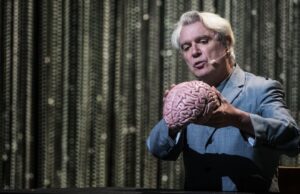
During the shelter-in-place orders of 2020, Sam Barondes came to my mind while watching David Byrne’s Broadway performance of American Utopia, as filmed by Spike Lee and streamed into my home. The opening song of American Utopia begins with Bryne holding a plastic model of a brain and singing the song “Here.” While pointing to different sections of the brain, Bryne sings, “Here is a region of abundant detail. Here is a region that is seldom used. … As it passes through your neurons, Like a whisper in the dark, Raise your eyes to one who loves you. It is safe right where you are.” The song continues before concluding with a question: “Here is an area of great confusion. Here is a section that’s extremely precise. And here is an area that needs attention. Here’s the connection with the opposite side … Here is something we call elucidation. Is it the truth? Or merely a description?” At the end of “Here,” Bryne holds the brain aloft like Hamlet contemplating poor Yorick’s skull. Here, in his oral history, Sam Barondes shares his truth—from his own experiences elucidating the molecular-workings of brains, to his work building institutions where his colleagues continue advancing biomolecular psychiatry.
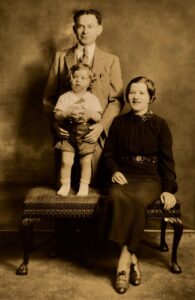
Samuel Barondes (age 2) standing with his father Solomon Barondes and his mother Yetta Barondes in Brooklyn, New York in 1935.
Furthermore, the metaphor of connections and how they evolve was central to both Sam Barondes’s oral history and to David Bryne’s American Utopia performance. Fruitful and long-lasting human connections animate Sam’s story, especially throughout his remarkable scientific career. Similarly, Bryne’s opening monologue in American Utopia begins: “I read that babies brains have hundreds of millions more neural connections than we do as adults and that, as we grow up, we lose these connections.” Bryne continued, “Well, what happens is, we keep the connections that are useful to us. And yes, there’s a process of pruning and elimination, and we get rid of a lot of the others, until the ones that are left define who we are as a person, who we are as people, they define how we perceive the world, and the world appears to make some kind of sense to us.” Here, in his published transcript, Sam shares how connections—both human and neural—helped him make sense of his world.
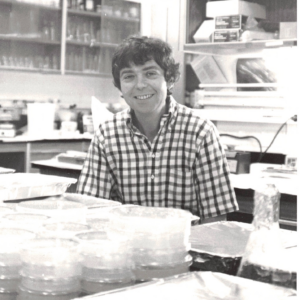
Throughout Sam’s interdisciplinary career in science, he authored over 200 original research articles in leading journals including Science, Nature, Proceedings of the National Academy of Sciences of the United States of America (PNAS), Cell, Journal of Biological Chemistry, Journal of Neuroscience, Journal of Neurochemistry, and Journal of Cell Biology. Among his many publications that Sam and I discussed were his two back-to-back 1962 publications in Science with Marshall Nirenberg, which were associated with Nirenberg’s Nobel Prize-winning research with poly-U to decipher the genetic code. Sam and I also reviewed his many years of research on cell adhesion and sugar-binding proteins, including his discovery of galectins, a class of proteins that bind to specific complex beta-galactosides. Throughout his interviews, Sam spoke about what motivated much of his career, some of which he shared in his June 1990 article in the Journal of Neuroscience, “The Biological Approach to Psychiatry: History and Prospects.” In the clip below, Sam recalls his early notion in 1962 that, “Maybe psychiatry is molecular biology?”
Sam and I also discussed his numerous books written for popular audiences. We spoke about his enjoyable and deeply informative book Molecules and Mental Illness, published by Scientific American Library in 1993 (revised in 1999). We discussed his books Mood Genes: Hunting for Origins of Mania and Depression (1998); Better Than Prozac: Creating the Next Generation of Psychiatric Drugs (2003); and Making Sense of People: Decoding the Mysteries of Personality (2011). In 2014, Sam published a book of light verse that I now read to my young daughter titled Before I Sleep: Poems for Children Who Think. His poem “Brain Dials” appears in the appendix to his oral history. Sam also wrote a substantial poem called “Recapitulation (In Verse)” that he published at the end of Molecules and Mental Illness, and which brilliantly summarizes the entire book. In the clip below, Sam reads aloud a portion of his inventive poem during his final oral history interview.
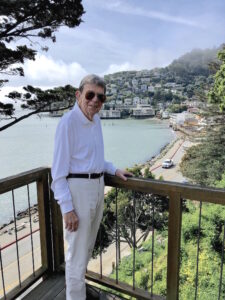
Here, again, Sam’s oral history reminds me of David Bryne’s American Utopia. Bryne’s final monologue returns to the performance’s theme of connections, both neural and personal. Bryne declares, “Despite all that’s happened, and despite all that’s still happening, I think there’s still possibility.” He concludes, “We’re a work in progress. We’re not fixed. Our brains can change. Maybe those millions of connections in our brains that got pruned and eliminated when we were babies somehow get kind of reestablished. Only now, instead of being in our heads, they’re between us and other people.” Throughout his oral history, Sam Barondes expressed a similar optimism. “I lived in this time of limitless opportunity,” Sam explained. “It’s all connected,” he told me. Later, Sam said, “You become part of a little in-group where you have connections. You learn from everybody.”
Now, here, you can learn from Sam Barondes.
— Roger Eardley-Pryor, PhD
Click the link below to read Sam’s oral history:
View additional video excerpts below:
Samuel Barondes: “A half century of integrating molecular neuroscience and psychiatry”
Samuel Barondes: “Recognizing new prospects for psychiatric genetics in 1984”
Samuel Barondes: “Curing severe depression with thyroid hormone in 1957”
John Briscoe: Ineffable San Francisco Poet, Historian, Lawyer, and Restaurateur
New oral history release: John Briscoe

The ineffable John Briscoe is a poet. He is also an award-winning author on the history of California wine and on the culinary history of San Francisco. He is a co-owner of Sam’s Grill & Seafood Restaurant in San Francisco, the fifth-oldest restaurant in the United States, founded in 1867. And, after earning his Juris Doctor from the University of San Francisco in 1972, Briscoe became a trial lawyer who has argued before the California Supreme Court, and tried and argued cases before the United States Supreme Court and the Permanent Court of Arbitration in The Hague. He is a Distinguished Fellow of the Law of the Sea Institute at UC Berkeley, and has taught courses at UC Hastings College of Law. Briscoe served as president of the San Francisco Historical Society and numerous other nonprofits. He remains a supporting member of the Friends of The Bancroft Library, in which he has conducted historical research and found inspiration for his poetry that he once described as “emotion recollected in tranquility.”
Briscoe and I video-recorded sixteen hours of his oral history at his home in Novato, California, over seven interview sessions held between December 2019 and January 2020. Those interviews produced a robust 384-page transcript including an appendix with numerous personal photographs, letters of wit, as well as poems penned both for and by Briscoe. You can access his transcript here, along with several links to video excerpts from his oral history.
Briscoe is a gifted raconteur and scholar, as befits an internationally regarded trial lawyer. His oral history showcases wide-ranging expertise on issues of the law, both domestic and international, as well as on literature, history, and poetry. Briscoe shares both his personal and professional life experiences with particular detail on his legal career as well as his friendships and collaborations with legal legends like Philip C. Jessup, a diplomat and giant of international law; with Stefan A. Riesenfeld, an expert in numerous legal fields and acclaimed UC Berkeley Law professor; and with Briscoe’s dearest friend, former legal adversary and, later, his law partner, Louis F. Claiborne, who some regard as the greatest US Supreme Court lawyer in the second half of the twentieth century.
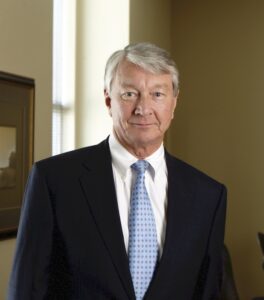
Briscoe began his legal career in 1972 in the Land Law Section of the California Attorney General’s Office, where he argued several cases against the United States and against other states in the original jurisdiction of the US Supreme Court. In 1980, Briscoe entered private practice in San Francisco specializing in real property and environmental litigation. He has represented diverse natural resource interests; the nation’s largest title insurers; several US states, including Alaska, Hawaii, Georgia, and California; the American Territory of Guam; and many city and county governments. Overseas, Briscoe has represented the Federal Democratic Republic of Ethiopia, the Republic of Korea, the State of Kuwait, and the United Nations Compensation Commission, among other clients. Briscoe has published numerous legal articles on natural resources, land use, land title, and international oceans law.
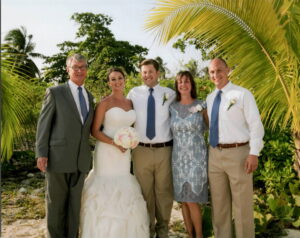
Briscoe’s intellectual opinions coupled with intimate personal stories and occasional tales of human eccentricity make his oral history both historically significant and enjoyable. Briscoe attributes his love of story and wit to his combined Irish and native Yaqui ancestry. The stories he shares here range from the 1917 murder of his grandfather, a police officer in Stockton, California, to Briscoe’s legal arbitration in the Hague of war crime accusations between Eritrea and Ethiopia. Along the way, Briscoe reflects on the rhetoric of Cicero, on applications of Jeremy Bentham’s Rationale of Judicial Evidence, on judicial opinions by Oliver Wendell Holmes, Jr., on the art of light verse poetry, on Chinese poetry of the Tang Dynasty, on the culinary tastes of Alexandre Dumas, on James Joyce’s use of the word “the,” and on his own work for the United Nations establishing rules for hearing and processing the enormous environmental claims resulting from Iraq’s invasion, occupation, and destructive retreat from Kuwait in 1990.
John Briscoe’s oral history offers a deeply personal, intellectual, and entertaining account of a unique San Francisco poet, author, restaurateur, and lawyer who practiced in the highest courts at every level.
— Roger Eardley-Pryor, PhD
Click the link below to read his oral history:
John Briscoe, “John Briscoe: Ineffable San Francisco Poet, Historian, Lawyer, and Restaurateur” conducted by Roger Eardley-Pryor in 2019 and 2020, Oral History Center, The Bancroft Library, University of California, Berkeley, 2021.
View additional video excerpts below:
John Briscoe: Learning from Louis Claiborne
John Briscoe: Poetry and the Art of Light Verse
John Briscoe: Kuwaiti Oil Wells and the UN Compensation Commission
John Briscoe: Truth in War, Ethiopia v. Eritrea
Enlisting Humanity by Uplifting the Voices Who Have Gone Unheard: Undergraduate Research in Oral History
Enlisting Humanity by Uplifting the Voices Who Have Gone Unheard
By Emily Nodal
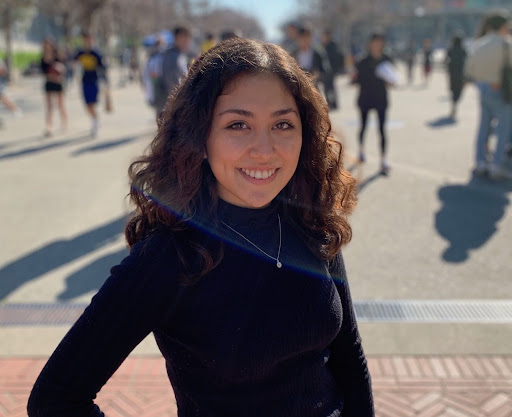
Emily Nodal, UC Berkeley Class of 2022, is a Society and Environment major in the Rausser College of Natural Resources with an emphasis on justice and sustainability while minoring in public policy. In Spring 2021, Emily worked with historian Roger Eardley-Pryor in the Oral History Center of The Bancroft Library and earned academic credits as part of Berkeley’s Undergraduate Research Apprentice Program (URAP). URAP provides opportunities for undergraduates to work closely with Berkeley scholars on research projects for which Berkeley is world-renowned. For her URAP project, Emily used oral history materials to create the video embedded below on “Environmental Justice, Systemic Racism, and Democracy.” She also suggested high school curriculum materials to accompany the video. Below, Emily shares the personal nature of her research.
For my URAP project during the Spring 2021 semester, I had the privilege of developing a high school curriculum on environmental justice utilizing the narratives and perspectives of those interviewed by the Oral History Center. This project was very personal to me because environmental injustice has become increasingly prevalent in my own community.
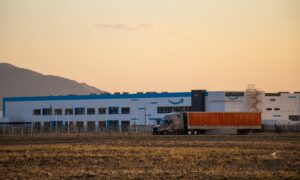
I grew up in the Inland Empire, an industrialized region in Southern California inhabited predominantly by low-income communities of color, where consistently poor air quality and smoggy days felt like the norm to my peers and me. In recent years, the rapid development of Amazon warehouses and corresponding traffic congestion has exacerbated the environmental vulnerability of my community’s exposure to environmental toxins and their subsequent health hazards.
Efforts in 2020 to expedite delivery services for the online shipping boom wrought by the coronavirus pandemic resulted in dramatic expansion of Amazon’s shipping facilities while further enriching the multi-billion dollar corporation. Amazon’s development efforts have heightened shipping efficiencies and brought new jobs to these predominantly low-income communities of color, while also disproportionately burdening the already polluted region with negative amenities and toxic hazards. According to the Inland Empire-based “People’s Collective for Environmental Justice,” the more than 3,000 warehouses in the Inland Empire are all sited in the highest percentile for toxic emissions in the state and the populations living within a half-mile radius of the warehouses are 85% people of color. As someone who grappled with the realities of environmental inequity directly, I welcomed the chance to expand my environmental justice research into an effective, oral history-based high school curriculum.
While exploring the array of interviews in the Sierra Club Oral History Project archive, I felt drawn to the narrative of Aaron Mair, a leader in the environmental justice movement and a former president of the Sierra Club. As a prominent Sierra Club leader from the EJ (environmental justice) movement and the first black president of the historically white environmental organization, Mair vividly illustrated how we, as environmental activists, must understand our environmental well-being as linked inextricably to the social, racial, and economic well-being of all others. Mair’s oral history became the basis for the educational video I created.
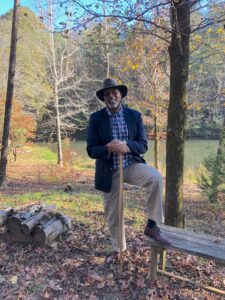
The ability of Mair and his family to endure the burdens of generational racism while at the same time upholding a connection to the natural world resonated with me and my own family’s experiences. Unlike the predominantly white leaders in the Sierra Club, many of whom began their activism focused on land and wildlife preservation, Mair’s lived experiences enabled him to see the cruciality of equitably uplifting all human and non-human stakeholders in conversations around environmental protection. He explained how his journey into the mainstream environmental movement came from his “family’s sense of home-place and a civil rights struggle, a migration struggle and pressure, dealing with the pressures of racism, while at the same time maintaining human dignity, but also maintaining a connection with their love of the natural beauty and wonders.”
Although I grew up in a low-income household, my family also valued the outdoors and took me camping in nature, which created my deep connection to and reverence for the natural world. However, I found my own experiences vastly different from many of my school peers from similar backgrounds. Environmental scholars like Carolyn Finney and Lauret Savoy have explored why many black and brown kids, from a young age, come to believe that nature and environmentalism isn’t for us. For too many of us, natural places and spaces are financially and even culturally inaccessible.
My engagement with Mair’s oral history narrative, coupled with my own experiences, reinforced how that racial exclusion emerged out of environmentalism’s flawed beginnings. Like many other movements in United States history, campaigns and institutions for wilderness preservation, land conservation, and modern environmentalism have been historically white-dominated. Mair examined this harmful past by reflecting upon his own organization and its founders, including the notoriously racist early UC Berkeley professor Joseph LeConte. As Mair explained in his oral history, LeConte “believed that African-Americans and Native Americans were inferior and separate and distinct races. He believed in his theory of life, which is that whites had a natural order and a higher chain of evolution over all things. He preached a theory of dominion over all things as opposed to stewardship of all things.” The problematic ideologies of early environmental advocates like Joseph LeConte permeated into the early environmental movement’s limited range of diversity and exclusionary land management practices. As described by Mair “it was them imposing upon [the land] their white will.”
In his oral history, Mair also explained how the environmental movement’s history continues to plague 21st century environmentalism in fundamental ways. Mair noted how “othering” marginalized groups historically has created contemporary environmental crises, as exclusion from environmental spaces has prevented those groups from becoming valid stakeholders in land-use decision making. Throughout most of its history, American environmentalism detrimentally established a dichotomy between humanity and nature, therefore requiring all humans not seen as “proper” stewards to be excluded. Mair critiqued this shortcoming in traditional environmental organizations, including in the Sierra Club, as advocating for the exclusion of humanity from nature in order to “save” it.
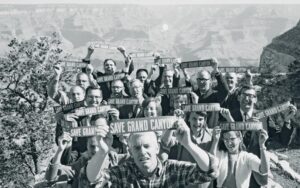
As Mair explained: “In the ‘saves,’ we create environmental organizations, and we become part of these clubs. And we think that the best way to protect land and nature is at the exclusion of humanity rather than the inclusion of humanity. It’s like building a fine Swiss watch and leaving out a master gear. And so, the ‘save’ organizations and their notion of preservation is missing a critical element, which is humanity, and humanity as a steward within that relationship. We should not be outside of it. Integral to the protection is our harmony with it… To me, that is like the story of the Yosemite Valley, how the First Nations were cleared out of the Yosemite Valley to protect it, even though they lived there for thousands of years… When humanity is relegated to being viewed as dirty or polluted in the eyes of the environment by other men, we lose something. That is indeed a crisis.”
The curriculum I created for this URAP project focused on environmental justice because if people of color remain socially, culturally, and economically disabled from accessing environmental spaces, then we will never be able to meaningfully contribute our widely diverse perspectives, experiences, knowledge, and solutions to the world’s escalating crises of climate change. Again, Aaron Mair articulated the need to expand and democratize marginalized communities’ access to environmental activism by his re-framing of the Sierra Club’s core mission to “enlist humanity.” Mair explained how “fundamentally in the United States as you enlist humanity in the United States, it’s through our democracy. It’s empowering our democracy. It’s empowering our humanity… And this is a huge linking of environmental rights, civil rights, voting rights, linking the fact that environmental [justice] is a function of a healthy democracy in civil society. The … fusion of the civil rights, environmental rights, and labor rights efforts really jived with our efforts to save humanity. Because if we’re going to talk about [how] to enlist humanity to save the planet, we have to tap and show humanity how these things are all connected.” Through his foundations in environmental justice, Mair understood that, to truly combat environmental degradation, the environmental movement must enlist people from historically oppressed, disinvested, and environmentally polluted communities.
Similarly, for my own community’s fight against environmental racism in the Inland Empire, vast populations of local community members must be mobilized to combat a multi-billion dollar corporation’s toxification of the region. Exploring Mair’s insights helped me realize how efforts in my own community require an intersectional approach of labor justice, environmental justice, and racial justice. Building enough pressure to combat the Inland Empire’s warehousing boom demands solidarity against the leading drivers of inequity and vulnerability. Although local community members will lead the fight, we must also enlist wider populations from a diversity of disciplines, localities, and demographics since the climate implications of Amazon’s warehousing boom also impacts our environment on a much wider scale. Amazon’s 2019 carbon report revealed that the global corporation “emitted 51.17 million metric tons of carbon dioxide last year,” an increase of 15% from 2018. I expect those numbers to rise even further due to the shipping boom brought upon by the global pandemic.
My reading of Aaron Mair’s oral history reiterates how radical change that finally prioritizes the well being of people and the natural world requires a wide range of collaborations between stakeholders on a wide scale. The mainstream environmental movement, the environmental justice movement, the labor justice movement, and the racial justice movement must learn to overcome ideological divisions, embrace their intersectional interests, and take unified action against structural trends that inherently create inequitable and unsustainable conditions. As Mair said, “The mutuality of all of us, depending upon all of us, our survival is dependent upon our neighbors. It’s dependent upon all the creatures, all the things within this planet. But our stewardship of those relationships, we don’t have the luxury to hate our brother, hate our sister. We don’t. And we don’t have the luxury to destroy and deplete all the ecosystems, because at the end of the day it is humanity that’s in the balance.”
I hope my curriculum development for this URAP project will contribute to education that expands minds and inspires change. For too long, people of color have been excluded from meaningful participation in environmental issues that directly impact the health of their children, families, and communities. By empowering and uplifting the voices of people who have often gone unheard, I hope we can more effectively come together as equitable stakeholders and participants in the movement for a more just and sustainable world.
OHC’s August 2021 Director’s Guest Column, “Interconnections,” by Roger Eardley-Pryor
Interconnections
By Roger Eardley-Pryor, PhD
Interconnections in oral histories are like the Baader-Meinhof Phenomenon: once you notice them, you start seeing them everywhere. At least that’s how interconnections appear to me, both within and between some of our oral history projects. Webs of connection within a single oral history are sometimes overt—like when Sierra Club leader Aaron Mair hitched together the thoughts of Dr. Martin Luther King, Jr. with the words of John Muir, all while discussing inherent intersections between voting rights, civil rights, and environmental justice. Other interconnections, as you’ll read below, demand a bit of digging. However, once you scratch the surface, they’re like the root system for Quaking Aspen trees: it’s all interconnected down below.
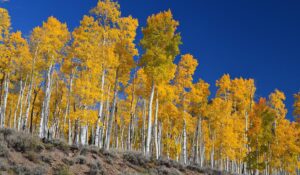
Quaking Aspens are the state tree of Utah, a place where I discovered some fascinating relationships between a few of our recent oral history projects. Hop along this interconnected oral history journey, with stops at a proposed power plant near a national park, then to a desert community in central Utah that twice experienced a major influx of new residents, which will bring us back to a new project the Oral History Center recently began. Along the way, we’ll examine environmental laws on air quality, lobby a few Senators, construct a coal-fired power plant, confront racist wartime hysteria, and seek contemporary healing from crimes of the past. I hope this journey leaves you with a sense of how oral histories reveal relationships between people and places, and how our sense of belonging to both evolves and intersects across space and time.
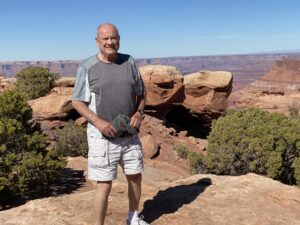
This journey begins with my interview with Tony Ruckel, another Sierra Club leader who, like Aaron Mair, was eventually elected president of the Club. Before that, in the 1970s, Ruckel founded and became director of the Rocky Mountain Regional Office for the Sierra Club Legal Defense Fund (SCLDF). The SCLDF, now called Earthjustice, was one of the nation’s first public interest environmental law organizations and, coincidentally, has many of its files archived in The Bancroft Library. Ruckel and his Rocky Mountain Regional Office handled all Sierra Club litigation from the northern plains, throughout the Rocky Mountains, and down to the desert southwest, including the red-rock canyonlands of southern Utah. A rouge riot of river-hewn rock undulates through southern Utah in streams of stone that reveal layers from eons upon eons of Earth. Wind-worn gorges where scrub brush and pine cling to canyon sides erupt in spires and stone arches of stark beauty and worldly wonder, such that several national parks aim to preserve that erosional landscape. During the energy crises of the 1970s, some of Ruckel’s legal campaigns featured battles against the Intermountain Power Plant, an enormous coal-fired electricity plant proposed just outside of scenic Capitol Reef National Park in southern Utah.
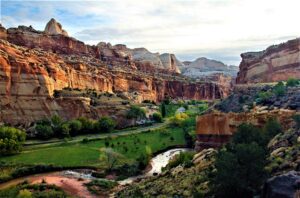
The early plans for the Intermountain Power Plant near Capitol Reef would have created one of the largest coal-fired facilities ever built with four giant smoke-stacks belching pollution into the air. As Ruckel recalled, “Originally, it was proposed at five thousand megawatts. Well, nobody’s ever tried to build a plant that size…. So, then they carved it down to three thousand megawatts.” Most of those megawatts would be sent by wire to sprawling southern California for purchase by L.A.’s Department of Water and Power, with additional power purchased by the municipalities of Anaheim, Burbank, Glendale, Pasadena, and Riverside. “It was clear California didn’t want to build this stuff,” Ruckel noted, “they just wanted to consume the energy.” To combat the giant coal plant near Capitol Reef, Ruckel’s legal strategy relied in part on the relatively recent Clean Air Act of 1970, which had surprisingly sharp teeth and a wide scope for federal regulation and enforcement.
The Clean Air Act of 1970 required the federal government to not just improve air quality in polluted areas, but it demanded the “prevention of significant deterioration of air quality” in areas that already had clean air, like at Capitol Reef National Park. However, in 1977, as Ruckel worked to halt the power plant in southern Utah, the Clean Air Act came up for Congressional review. The US House of Representatives rushed through new amendments and, as Ruckel told it, “lo and behold, there was nothing regarding the prevention of significant deterioration in the new statute … the language supporting it had been removed in the amendments.” Ruckel quickly shifted gears and, with help from Friends of the Earth, mounted a lobbying campaign in the US Senate to reinstate prevention of significant deterioration of air in amendments. “The result of the lobbying,” Ruckel explained, “was we certainly educated a ton of Senate staffers, particularly, and a few critical Senators. And as it resulted, that turned out to be enough.” The final 1977 Clean Air Act amendments re-inserted language on the prevention of significant deterioration of air, which pushed the Intermountain Power Plant toward a different construction site away from southern Utah’s pristine national parks. In the early 1980s, plans for the power plant moved north to the desert of central Utah near a town named Delta, which provides the next stop on our interconnected journey between Oral History Center projects.
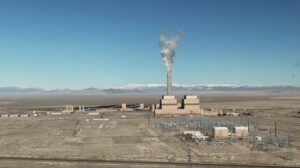
Tony Ruckel’s efforts to move the Intermountain Power Plant away from southern Utah’s national parks produced significant demographic and social changes in the small desert community of Delta in central Utah. In 1981, during groundbreaking ceremonies for the Intermountain Power Plant, the population of Delta City was 1,930. Over the next few years, Delta’s population exploded with 6,000 new construction workers and their families who struggled to find temporary housing, often living in burgeoning mobile home parks or in motel rooms. Delta’s over-crowded classrooms benefited from new school construction, paid with nearly $8 million in mitigation funds from the Intermountain Power Plant, which also helped build a new city hall. In 1984, a new hospital broke ground in the town of Delta in addition to sewer and water system improvements, enhanced police protection, and new vocational education opportunities funded in part by the power plant. But even as local incomes rose, so did crime rates and, after Delta’s long standing ban on Sunday alcohol sales was repealed in 1983, liquor purchases more than doubled. After the power plant’s first coal-fired unit came on line, a formal dedication of the project held in 1987 saw an estimated 8,000 people attend. The tiny Delta airport handled fifty-two private airplanes, which required hiring an air traffic controller in a temporary tower built for the occasion. The Mormon Tabernacle Choir sang, and the President of The Church of Jesus Christ of Latter-day Saints came down from Salt Lake City to offer a dedicatory prayer. In the 1980s, after inviting the Intermountain Power Plant to Delta, the town transitioned temporarily from a dozy desert community to a bustling boomtown. A swift sense of change swept through Delta’s desert community like a flash-flood through a slot canyon.
Those developments in Delta during the 1980s spurred some longtime residents to preserve parts of its dwindling past. When local residents launched a drive to retrieve and preserve an 1893 Case tractor in the county, they sparked interest in building an historical center to house such artifacts. The Great Basin Museum and the Great Basin Historical Society were both founded in the mid-1980s. And in over-subscribed journalism classes at Delta High School, teachers aimed to engage new students in the local history of their new hometown. Students began interviewing Delta’s local elders for the school paper and learned that many longtime residents had memories and historical artifacts from an American race-based prison camp constructed during World War II just a few miles outside of Delta, Utah.

Back in February 1942, just 10 weeks after Japan attacked Pearl Harbor, President Franklin D. Roosevelt signed Executive Order 9066 authorizing the exclusion of all persons of Japanese ancestry from “prescribed military areas.” More than 110,000 Japanese American citizens—men, women, and children—were forced from their homes in Western portions of the country to incarceration camps built in desolate areas of the United States. One such Japanese American incarceration camp was built hastily in the remote desert of central Utah, sixteen miles from Delta. The “Central Utah Relocation Center,” more commonly called Topaz, was designed to house 9,000 prisoners in forty-two blocks of make-shift housing units. During its three years of operation, Topaz imprisoned 11,212 individuals due to their race and family ancestry. Most were American citizens. In the early 1940s, the influx of imprisoned Japanese Americans at Topaz made it the fifth-largest community in Utah before the camp closed and was disassembled in October 1945.
In the early 1980s, the influx of new residents to central Utah for the Intermountain Power Plant sparked renewed interest in Delta’s local history, including that of Topaz and the people affiliated with it. In 1983, survivors of incarceration at Topaz and residents in Delta together created the Topaz Museum Board as a 501(c)(3) organization to formally collect stories and artifacts for an eventual museum in Delta. Around the same time, longstanding protests by Japanese Americans demanding financial redress for their mass incarceration without due process gained new traction. In 1980, the US Congress and President Jimmy Carter approved creation of a Commission on Wartime Relocation and Internment of Civilians (CWRIC). The Commission’s report, released in late 1982 and titled Personal Justice Denied, denounced the injustice of mass exclusion, removal, and detention of Japanese Americans and concluded the government’s policies were caused not by “military necessity” but by “race prejudice, war hysteria, and a failure of political leadership.” The Commission’s recommendations eventually culminated in passage of the Civil Liberties Act of 1988, which provided a national apology and individual reparations of $20,000, known as redress, that were delivered to survivors of that imprisonment.
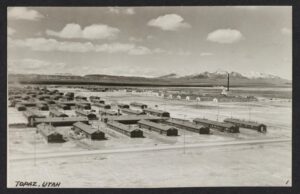
The redress movement in the 1980s encouraged renewed reckoning with one chapter from the long, dark history of American racism, but over time Americans’ knowledge of Japanese American incarceration appeared to fade. Nearly twenty years after redress, Congress passed the Preservation of Japanese American Confinement Sites (JACS) Act of 2006, which established a $38 million matching-grant program to identify, collect, and preserve stories, artifacts, and historic sites connected to the World War II incarceration of Japanese Americans. The Topaz Museum Board in Delta, Utah, submitted an early JACS grant and, after many years of effort, the Topaz Museum opened to the public in 2017. One of the museum’s founders wrote, “If you visit the museum, you might be able to sense the complexity of the deeply troubling history of Topaz. We hope you will be convinced that we all have an obligation to prevent anything like it from happening again.”
Here’s where the points along our journey connect back to Berkeley’s Oral History Center and to The Bancroft Library. Almost ten years ago, the Oral History Center also earned a JACS grant to conduct oral histories with Japanese Americans who attended UC Berkeley before—and in some cases after—their incarceration during World War II. That initial oral history JACS project coincided with The Bancroft Library’s separate JACS grant to digitize and make available online the library’s extensive Japanese American incarceration materials, which have now become The Japanese American Evacuation and Resettlement Digital Archive. Many of those materials will be used in a forthcoming exhibition titled, “Uprooted: The Incarceration of Japanese Americans,” which will open this October in The Bancroft Library.
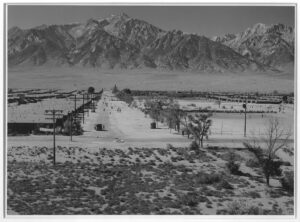
At the same time, the Oral History Center is now in the early stages of a new JACS project titled “Healing Intergenerational Wounds of Japanese American Confinement?: Private and Public Memory at Manzanar and Topaz.” During the pandemic year of 2020, the Oral History Center submitted a JACS grant proposal focused on two of the ten Japanese American prison camps during World War II: Manzanar in southeastern California, and Topaz in central Utah. In May of 2021, the same month the Oral History Center published our interview with Tony Ruckel for the Sierra Club Oral History Project, we learned our JACS grant proposal was successful!
The heart of our newest JACS project asks, how do people heal? In collaboration with Japanese American advisors and partners, we will conduct new oral history interviews, produce a new Berkeley Remix podcast series based on those interviews, and create graphic narrative artwork to document and disseminate the ways in which intergenerational trauma and healing occurred after the U.S. government’s incarceration of Japanese Americans during World War II. With narratives of healing as our project’s through line, we will interview descendants of those involved in the redress movement who initiated the conversation around healing; individuals who relate to their Japanese American heritage and incarceration history through popular culture; and those who interpret these stories of trauma and empowerment at incarceration sites and beyond. We will investigate the impact of different types of healing, how this informs collective memory, and how these narratives change across generations. The oral histories conducted for this JACS project will examine and compare how private memory, creative expression, place, and public interpretation intersect at the Manzanar and Topaz prison camps. We hope that preserving and sharing this myriad of voices from an intergenerational spectrum of experiences—both historic and contemporary—will provide an accessible way for society to engage with America’s fraught past with Japanese American incarceration.
Writer and Sierra Club member Wallace Stegner, whose interview with the Oral History Center is titled “The Artist as Environmental Advocate,” wrote an essay in 1986 titled “The Sense of Place.” “It is probably time we looked around us instead of looking ahead,” Stenger wrote, “to learn that place’s history and to … acquire the sense not of ownership but of belonging.” Who belongs to a place, what belongs, and how they belong—or how they do not—are all questions that echo across the oral history journey recounted in this post, particularly as they reverberate in the canyons and over the deserts of Utah. But questions of belonging and place animate all of American history. Indeed, that is the story of humankind.
The stories of how people make sense of their place in the world, and how their sense of belonging changes over time, is exactly what we try to record at the Oral History Center. I’ve learned from preserving and promoting these stories that, almost always, they are interwoven in intricate and unexpected ways. As Dr. Martin Luther King wrote in 1963 from a jail cell in Birmingham, “I am cognizant of the interrelatedness of all communities and states.” King continued, “Injustice anywhere is a threat to justice everywhere. We are caught in an inescapable network of mutuality, tied in a single garment of destiny.” Former Sierra Club president Aaron Mair, in his oral history, connected King’s thoughts to words scribbled in a journal by eventual Sierra Club founder John Muir nearly one hundred years earlier. In 1869, while spending a transformative summer living in the Yosemite Valley, Muir wrote, “When we try to pick out anything by itself we find that it is bound fast by a thousand invisible cords that cannot be broken, to everything in the universe.”
Interconnected threads such as these between people, places, and projects at the Oral History Center weave a remarkable tapestry through time. The more time you spend exploring our incredible archive of oral history interviews, the more intricate and meaningful these connections begin to appear. This month, as a new academic year begins and students and staff physically return to Berkeley—with many first and second-year students stepping foot on campus for the very first time—I encourage you to dive into our collection and see what kinds of interconnections might appear.
Find these and all the Oral History Center’s interviews from the search feature on our home page. You can search by name, keyword, and several other criteria. To ensure a full text search, on the next page scroll down and toggle on the button that says “full text.” You can also visit all our collection guides and our projects page to find oral histories on specific subjects. We have oral histories on just about every topic imaginable.
— Roger Eardley-Pryor, PhD
H. Anthony (Tony) Ruckel: Sierra Club President 1992-1993, Pioneering Environmental Lawyer with Sierra Club Legal Defense Fund
New Sierra Club Oral History Project interview:
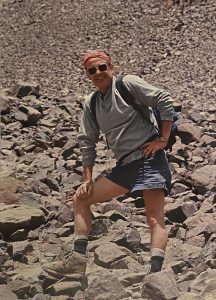
As a young lawyer, Tony Ruckel was just shy of his twenty-ninth birthday when, in the spring of 1969, he brought the nation’s first litigation under the 1964 Wilderness Act to the US District Court for Colorado. Ruckel and his plaintiffs—among whom included veterans from the US 10th Mountain Division, a wilderness guide, a local outfitter, the Town of Vail, Colorado Magazine, two local conservation organizations, and the Sierra Club—all believed the definition of wilderness set forth in the 1964 statute aptly described the acres adjacent a primitive area near Vail that the US Forest Service had proposed to sell for logging.
At the time, Ruckel had just moved back to Colorado, where earlier he had earned his undergraduate degree in Anthropology with an emphasis in Archeology due to his summer work at Pueblo Indian archeological sites in Mesa Verde National Park. Ruckel had returned to Colorado from Washington DC, where, in the 1960s, he marched in Civil Rights demonstrations, witnessed other historic events, and earned his J.D. from George Washington University Law School. It was in DC where Ruckel first joined the Sierra Club upon learning the Club was fighting against a government proposal to dam the Grand Canyon. By 1969, upon returning to Colorado, Ruckel represented the Sierra Club in court and in 1970 won his first major environmental law case, Parker v. United States (US District Court for Colorado, 1970). With that victory, Ruckel helped established an important legal precedent that ultimately enabled the designation and preservation of vast tracts of wilderness all across the United States.

Soon after, Ruckel founded and became director of the Rocky Mountain Regional Office for the Sierra Club Legal Defense Fund (SCLDF), one of the nation’s first public interest environmental law organizations, now named Earthjustice. From 1972 to 1986, Ruckel worked as the Rocky Mountain Regional Director and staff attorney for SCLDF, with responsibilities for litigation on areas stretching from the desert Southwest through the Northern Plains, including several of the nation’s premier national parks. Ruckel’s legal campaigns with SCLDF included battles against coal-fired power plants and resisting placement of a nuclear waste repository near a national park that could have threatened the downstream drinking water of the Colorado River from Utah to southern California.
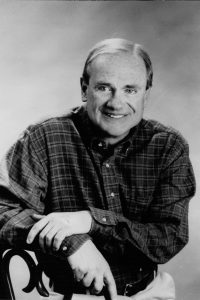
Later, from 1990-1993 and 1996-1998, Ruckel was elected to and served on the national Sierra Club’s board of directors, which included his terms as Secretary, Treasurer, and from 1992 to 1993 as President of the Sierra Club. Additionally, through his service on the Sierra Club’s Investment Advisory Committee, Ruckel helped pioneer for environmental non-profits their financial investment in non-extractive industries. Throughout all of these endeavors, Ruckel advocated passionately for the protection of public lands and wilderness areas, while also regularly exploring those lands. Ruckel became an avid long-distance runner and is a rare mountaineer who has summited all fifty-four of Colorado’s 14,000-foot peaks.
In his oral history, part of the renewed Sierra Club Oral History Project, Ruckel discusses all of the above and more, including his family history, the exciting early years of environmental law, as well as organizational tensions between the national Sierra Club, the Sierra Club Foundation, and SCLDF. Tony Ruckel and I recorded his fifteen-hour oral history over five interview sessions in September 2019, all at his home in Denver, Colorado. I am delighted to now share his 369-page transcript here, which includes photographs from some of Ruckel’s ascents of 14,000-foot summits throughout Colorado.
Tony Ruckel’s oral history is significant for those interested in environmental history and United States history, particularly for his work helping pioneer the field of environmental law and his legal efforts in the 1970s to halt the construction of massive fossil fuel and nuclear energy projects in the Southwest. Additionally, from 1963 through 1968, Ruckel witnessed and participated in several historic events in Washington DC, including marching to the Lincoln Memorial and standing less than 100 yards from Dr. Martin Luther King during his immortal “I Have a Dream” address; standing in line for hours on a wintry November night waiting to pass President Kennedy’s catafalque in the Capitol Rotunda; attending Supreme Court arguments presided over by Chief Justice Earl Warren; as well as seeing significant parts of northeast Washington burn upon Dr. King’s assassination in April 1968.
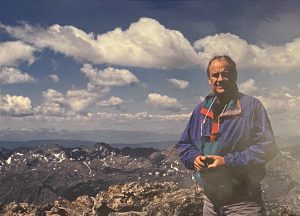
Ruckel’s oral history also makes substantive contributions to the Sierra Club Oral History Project. In the late 1960s, for instance, Ruckel played a formative role expanding the Sierra Club’s East Coast activities. But most importantly, as the founder and director of the Rocky Mountain Regional Office for SCLDF, Ruckel played a significant role establishing and shaping the early evolution of environmental law. His narration here on friendships and legal campaigns with other pioneers of environmental law—like David Sive, Jim Moorman, Phillip Berry, Michael McCloskey, Richard Leonard, Leland Selna, Rick Sutherland, Beatrice Laws, and others—complements and supplements several existing interviews in the Sierra Club Oral History Project. And with regard the Sierra Club’s contemporary campaigns to combat climate change by ending the extraction and use of fossil fuels, Ruckel’s narrative of his legal battles against the Kaiparowits and Intermountain power plants reveals the Sierra Club’s surprisingly deep roots to move “Beyond Coal” several decades before that campaign’s formal designation. Additionally, as a nationally elected leader on the Sierra Club’s board of directors in the 1990s, Ruckel oversaw challenges to the Club’s organizational finances and relationships vis a vis the Sierra Club Foundation and the Sierra Club Legal Defense Fund. During his time on the board of directors, Ruckel also made significant contributions to ways that Sierra Club finances are invested, accumulated, and presented publicly.
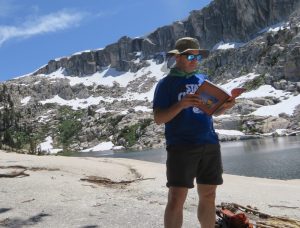
Lastly, Ruckel’s oral history compliments The Bancroft Library’s significant collections related to the Sierra Club. In preparation for his interview, I read carefully Ruckel’s own book about environmental law and his career in it: Voices for the Earth: An Inside Account of How Citizen Activists and Responsive Courts Preserved National Treasures Across the American West (Samizdat Creative 2014). Ruckel kindly donated a copy of his book to The Bancroft Library’s permanent collection [Call number TD171 .R83 2014]. Additionally, just prior to Ruckel’s interviews, it so happened The Bancroft Library made publicly accessible numerous additions to its already large collection of Sierra Club Legal Defense Fund Records (BANC MSS 71/296 c, Sierra Club Legal Defense Fund Records, The Bancroft Library, University of California, Berkeley). The existing collection already included agendas, minutes, reports, clippings, financial reports, dockets, new matter forms, notes, and subject files, mostly pertaining to SCLDF’s now-infamous Mineral King litigation. In late July 2019, in preparation for Ruckel’s oral history, I met with Lisa Monhoff, the project archivist who processed The Bancroft Library’s new additions to the SCLDF collection. Monhoff explained how the new records range from 1967 to 1995 and include environmental litigation cases from more than 30 states and the District of Columbia, as well as amicus briefs for numerous cases, including some for the Supreme Court of the United States.
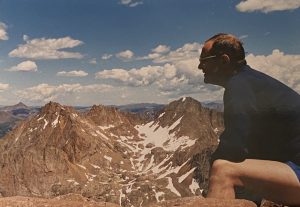
Ruckel then highlighted the following archival collections that complement sections from his own book on those topics, all of which he and I discussed during his oral history: Series 1: Administrative and Operational Files 1970-1991, Carton 3, folder 6: River of No Return Wilderness (Idaho) 1973-75, also covered in Voices for the Earth, pages 94-99; Series 3: Additions Received in 2009 1967-1995, Subseries 3.1: Environmental Litigation 1973-1995, Carton 9, folder 11: Colorado – Pitkin County 1991, also covered in Voices for the Earth, pages 116-121; Series 3: Additions Received in 2009 1967-1995, Subseries 3.1: Environmental Litigation 1973-1995, Carton 13, folders 14-15 – Circle Cliffs, Trans-Delta Oil and Gas 1973-1981, also covered in Voices for the Earth, pages 33-38. During his oral history, Ruckel and I discussed all of those topics and many more, including his work on cases related to managing the Grand Canyon (see Voices for the Earth, pages 49-65) and his efforts against the creation of a nuclear waste repository proposal next to Canyonlands National Park (see Voices for the Earth, pages 195-212).
Tony Ruckel’s gregarious nature and his storytelling made conducting his oral history a pleasure. The few days Ruckel and I shared together in September 2019 made me wish I could have joined him around the campfire out in some of the wilderness areas he helped preserve through his pioneering legal career. With the addition of Tony Ruckel’s oral history, the Sierra Club Oral History Project now includes accounts from well over one hundred volunteer leaders and staff members active in the Club for more than a century. Varying from only one hour to over thirty hours in length, these interviews document aspects of the Sierra Club’s diverse activities and concerns over the years, including protection of public lands and wilderness areas; attending to the “explore and enjoy” aspects of the Sierra Club’s mission through its robust outings program; safeguarding water and air quality; promoting sustainable energy and progressive climate policies; and working toward environmental justice. The full-text transcripts of all interviews in the Sierra Club Oral History Project, including this interview with Tony Ruckel, can be found online at the Oral History Center website.
— Roger Eardley-Pryor, PhD
H. Anthony (Tony) Ruckel, “H. Anthony (Tony) Ruckel: Sierra Club President 1992-1993, Pioneering Environmental Lawyer with Sierra Club Legal Defense Fund” conducted by Roger Eardley-Pryor in 2019, Oral History Center, The Bancroft Library, University of California, Berkeley, 2021.
Bancroft Roundtable about Aaron Mair and the Sierra Club Oral History Project
At the recent Bancroft Roundtable on April 15, 2021, I had the honor of sharing the oral history journey I was lucky to experience in November 2018 while conducting a 15-hour interview with Aaron Mair, the Sierra Club’s 57th president and its first Black president.
The questions at the heart of my presentation were: How did the experience of conducting Aaron Mair’s oral history—first in South Carolina and then in Albany, New York—relate to the power of place and the importance of interconnection, two key themes that arose in Aaron’s oral history? And how has the enslavement and emancipation of Aaron’s ancestors, as well as his own life experiences, intersected with the Sierra Club’s evolving efforts toward environmental justice and its reckonings over race since the Club’s founding in 1892?
You can view my Bancroft Roundtable presentation here:
These informal Bancroft Roundtable talks bring together the campus community and the wider public to represent the fruits of research conducted at Bancroft. My interview with Aaron Mair occurred as part of the renewed Sierra Club Oral History Project, a collaboration now a half-century old that arose between the Sierra Club, one of the oldest and most influential environmental organizations in the United States, and the Oral History Center of The Bancroft Library, one of the world’s oldest organizations professionally recording and preserving oral history interviews. Over the past fifty years, this ongoing collaboration has produced an unprecedented testimony of engagement in and on behalf of the environment as experienced by individual members and leaders of Sierra Club.
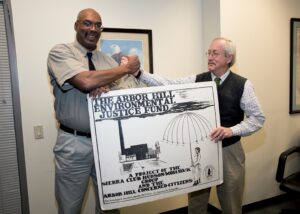
Aaron Mair’s more-than two-decades of leadership within the Sierra Club has reflected a necessary and important process of change that the Club is currently experiencing, especially on issues regarding race—both with regard to the Sierra Club’s long history and for its future. I’m delighted I had the opportunity to meet Aaron and to record his life story so that others, in the future, can learn his lessons, especially as they relate to this present moment.
With regard to the power of place, Aaron Mair’s sense of self and his sense of place are deeply entangled. To nourish one’s sense of place, to acquire the sense not of ownership but of belonging, fellow Sierra Club member Wallace Stegner suggested in an essay titled “The Sense of Place” that we look around us instead of always looking ahead. Oral historians like myself typically help narrators look back and reflect on their past. However, the intense week I spent with Aaron Mair while recording his fifteen-hour oral history helped me realize how much we can learn by joining our narrators in looking around.
Aaron draws strong connections between his ancestry as a Black American and his intersectional activism for justice. And what Aaron describes as his “culture, custom, and heritage” all grow directly from particular places. Those places, in turn, have shaped Aaron’s sense of justice, his demands for equity, and his sensibilities toward environmental stewardship. In my Bancroft Roundtable talk, I shared my own experiences of visiting places with Aaron that he considers central to his own life story.

I also hope that sharing this behind-the-scenes perspective of my interview experiences with Aaron enabled consideration on the praxis of oral history, particularly to the potential importance of a narrator and an interviewer sharing embodied experiences situated in a particular place—or, in this case, particular places—notably in places the narrator finds meaningful. That embodied experience might be especially important between a white interviewer and a Black narrator. At least, I certainly found it to be important in my interview experience with Aaron Mair. The powerful places that Aaron shared with me, and the enlightening experiences they enabled for his oral history interview might raise new questions for our new era of conducting oral history interviews over Zoom. Namely, what might be lost when a narrator and interviewer no longer experience together the embodied and shared-place aspects of conducting an oral history together?
Nancy Donnelly Praetzel: Tales from Marin County
New oral history: Nancy Donnelly Praetzel
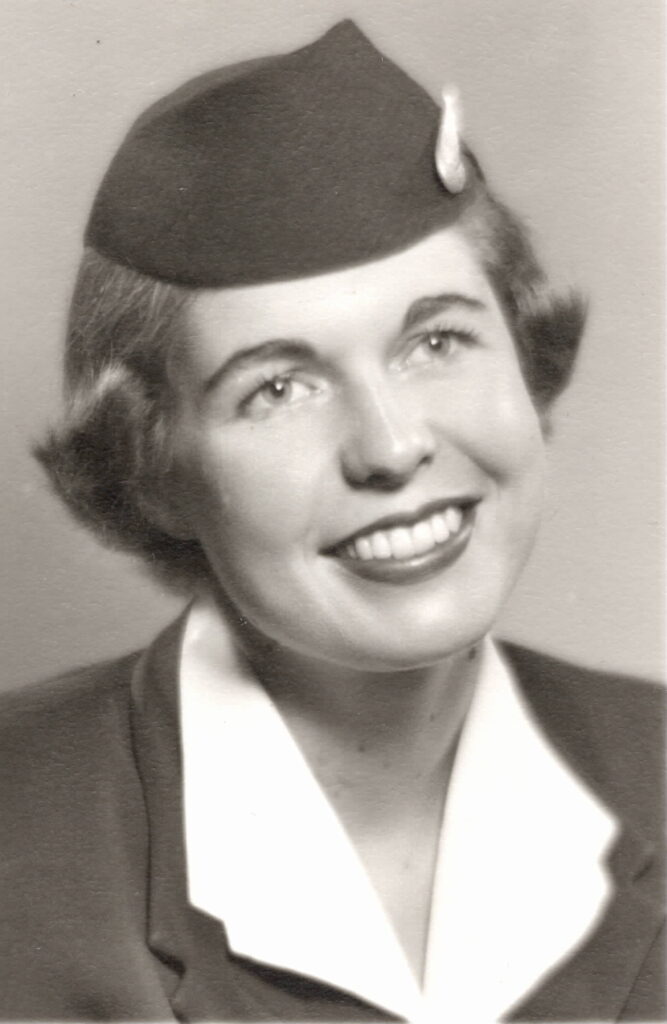
Nancy Donnelly Praetzel’s oral history documents a century of lived history in Marin County as told by a 1953 graduate of UC Berkeley. Praetzel, who has researched her family’s genealogy, discussed several generations of her family who have lived in Marin County from just after the 1906 earthquake through the present. She shared her family’s stories of migration to and survival in Marin County, including that of her English-born grandfather, Ernest Clayton, who made beautiful paintings of California wildflowers that she still sells today. Praetzel also recounted her own memories of the Great Depression, of life on the Homefront during World War II, of youth summer camps in Sonoma County, as well as her experiences at UC Berkeley in the early 1950s. Praetzel offered insight into the nature of work as a stewardess in the commercial airlines industry of the mid-1950s. She also discussed her marriage from 1957 through today to fellow UC Berkeley graduate, Robert Praetzel, with whom she raised four children in Marin County. Nancy Donnelly Praetzel’s oral history provides a snapshot of one woman’s experience from what Tom Brokaw popularized as the “Greatest Generation.”
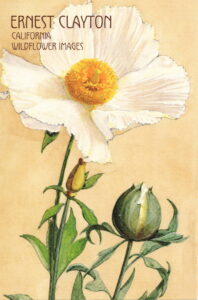
Nancy Donnelly Praetzel was born on September 30, 1931, in Marin County, California. Her maternal grandparents came to the Bay Area, respectively, from Ireland and England. Both her maternal and paternal grandparents met in San Francisco and moved to Marin County after destruction of their homes in the 1906 earthquake. In the 1930s, Praetzel’s British maternal grandfather, Ernest Clayton, began painting wildflowers he collected while hiking in Marin County, the original prints of which he donated to the San Francisco Public Library. Nancy Praetzel later resurrected these prints from the archives, hosted various gallery showings of her grandfather’s art, and now sells his prints online.
Upon completing grammar school and high school in Marin County, Praetzel attended UC Berkeley from 1949 to 1953 where she joined the Delta Delta Delta sorority and majored in Social Welfare. Upon graduation, Praetzel worked in Marin County for the Camp Fire Girls, the first nonsectarian, multicultural organization for girls in America. From 1955-1957, Praetzel worked as a United Airlines stewardess, including a stint traveling with the DC Press Corps during Dwight D. Eisenhower’s 1956 re-election campaign. In 1957, she married Robert Praetzel, a fellow UC Berkeley graduate whom she met on campus seven years earlier. They have been married over six decades and live in the same home, nestled among redwood trees on the slope of Mt. Tamalpais, in Kentfield, Marin County, California, where they raised their four children. The appendix to Nancy Donnelly Praetzel’s oral history includes newspaper clippings from her time at Cal, examples of her grandfather’s wildflower prints, and several family photographs from Praetzel’s long, rich life.
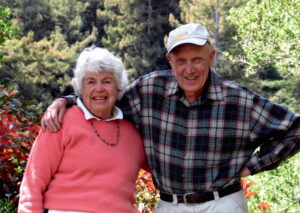
I wish to thank Nancy Praetzel and her husband Robert for their patience this past year as we adjusted to the pandemic-induced realities of remote work while finalizing their oral history interviews. I also want to thank the anonymous donor whose generous gift to the Oral History Center made these interviews possible.
—Roger Eardley-Pryor, PhD
Robert Praetzel: Marin County Lawyer Who Stopped Marincello
New oral history interview: Robert Praetzel
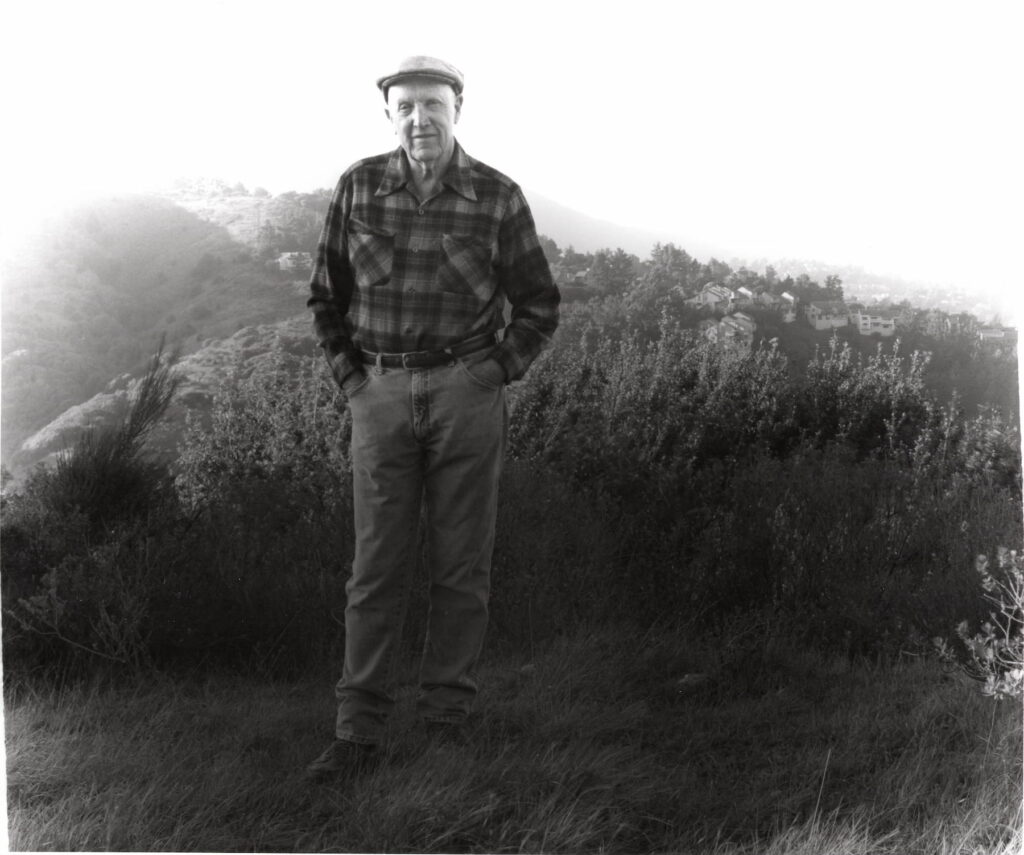
for the book Legacy: Portraits of 50 Bay Area Environmental Elders
with text by John Hart, published by Sierra Club Books in 2006.
Robert Praetzel, a World War II veteran and graduate of UC Berkeley in 1950, is the Marin County lawyer responsible for stopping Gulf Oil’s Marincello real estate development in the late 1960s. The Marincello project would have built from scratch a new city in Marin County for some 30,000 people housed in fifty apartment towers, numerous single-family homes, low-rise apartments, and townhouses on 2,100 pristine acres in the Marin Headlands area. Today, thanks to Robert Praetzel’s fastidious and pro-bono legal work from 1966 through 1970, those lands are now preserved within the Golden Gate National Recreation Area. Praetzel and I recorded his four-hour-long oral history in the spring of 2019 at his home, nestled among the redwood trees on the slope of Mt. Tamalpais in Kentfield, Marin County, California. Praetzel’s 127-page transcript, complete with family photographs, adds important details to the broader story of how two major American cities, San Francisco and Oakland, came to have such exceptional tracts of preserved national park lands just minutes away from their urban centers.
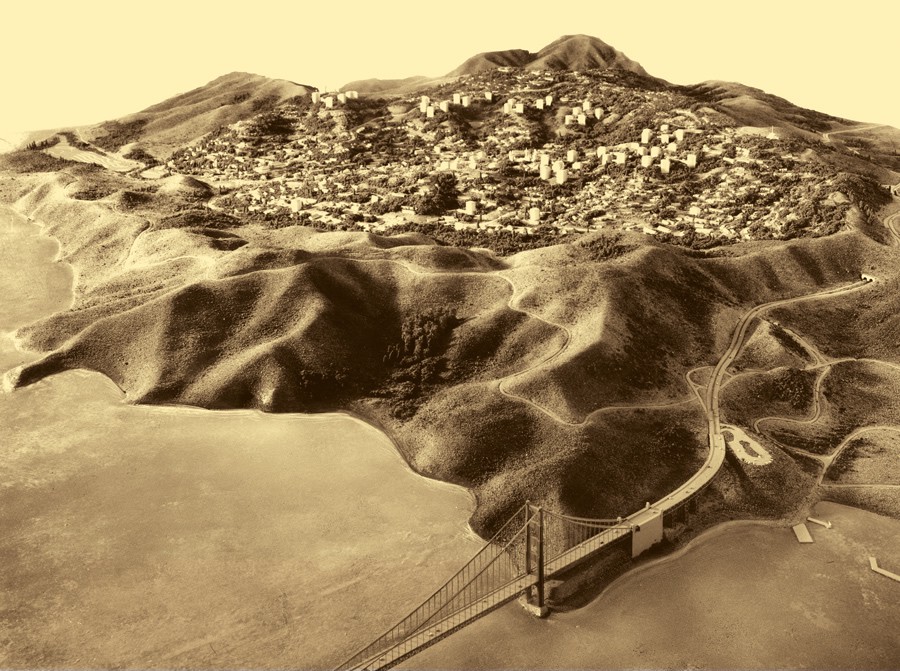
preserved as Gerbode Valley in the Marin Headlands area of the Golden Gate National
Recreation Area.
Prior to recording Praetzel’s interview, the Oral History Center’s archives included a multi-narrator volume on Saving Point Reyes National Seashore, but not on the substantial Marin Headlands area that Praetzel helped preserve. Our oral history archive also includes previously recorded interviews with Martin Rosen, a conservation lawyer who worked in conjunction with Robert Praetzel; with Martha Gerbode, the philanthropist who helped purchase and preserve the land that Praetzel saved from development for inclusion in the Golden Gate National Recreation Area; as well as a Sierra Club oral history volume focused on the San Francisco Bay Area that references the Marincello real estate project that Praetzel defeated. Now, with the inclusion of Robert Praetzel’s oral history, the Oral History Center collection includes details of his dogged and pro bono legal efforts to preserve the Marin Headlands from the Marincello project, which also called for a “landmark hotel” atop the highest point in the Headlands as well as 250 acres for light industry, a mile-long mall lined with reflecting pools, and a square full of churches called Brotherhood Plaza. In the late 1960s, Robert Praetzel played an essential role in legally stopping this development project in what is now preserved as the Gerbode Valley and managed by the US National Park Service.

Robert Praetzel’s oral history also offers recollections from his youth in Marin County during the Great Depression (including eating a squirrel that his father hunted one Thanksgiving); his Navy service during World War II aboard a tanker-boat carrying highly explosive aviation fuel across the Pacific Ocean; his experiences as a student at UC Berkeley and UC Hastings College of Law in the late 1940s and early 1950s; as well as his marriage to fellow Berkeley alumnus, Nancy Donnelly Praetzel, with whom he raised a family in Marin County, all while building his eclectic legal career. In addition to detailing his victory against the Marincello development, Praetzel shared other stories from his legal career. One of those stories recounts his pro bono representation of environmental activists in 1969 who were arrested for obstructing logging trucks from felling a grove of redwood trees along the Bolinas Ridge in Marin County. Local newspaper clippings about the case are included in the appendix to Praetzel’s oral history, along with several photographs from Praetzel’s long, rich life.
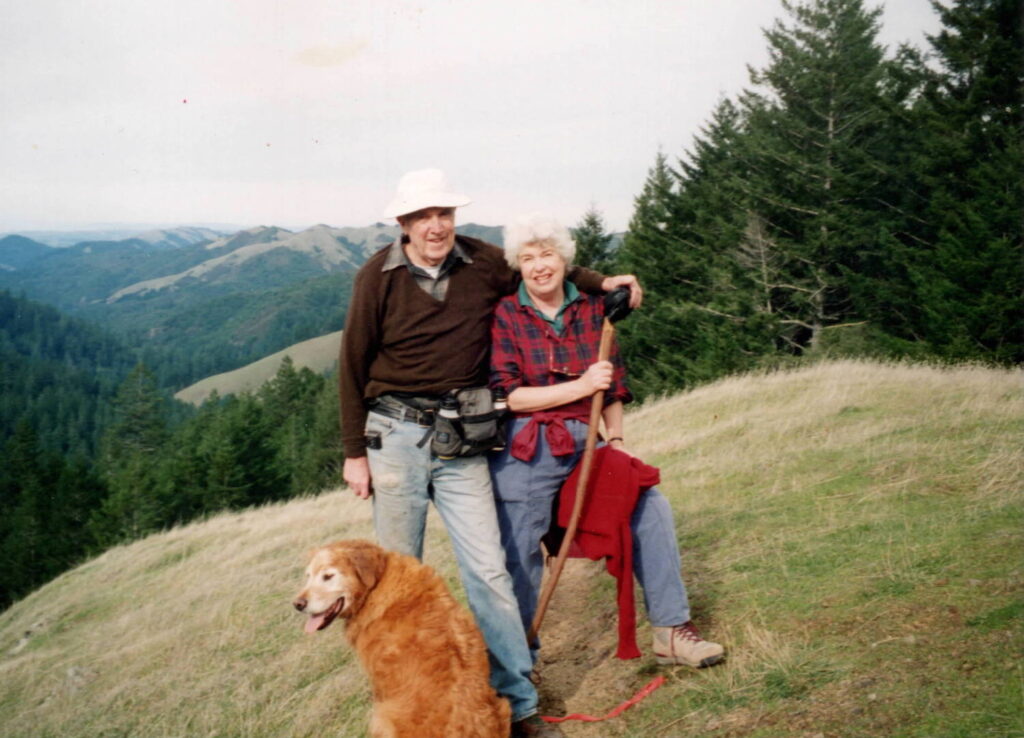
I wish to thank Robert Praetzel and his wife Nancy Donnelly Praetzel for their patience this past year as we adjusted to the pandemic-induced realities of remote work while finalizing their oral history interviews. I also want to thank the anonymous donor whose generous gift to the Oral History Center made these interviews possible.
—Roger Eardley-Pryor, PhD